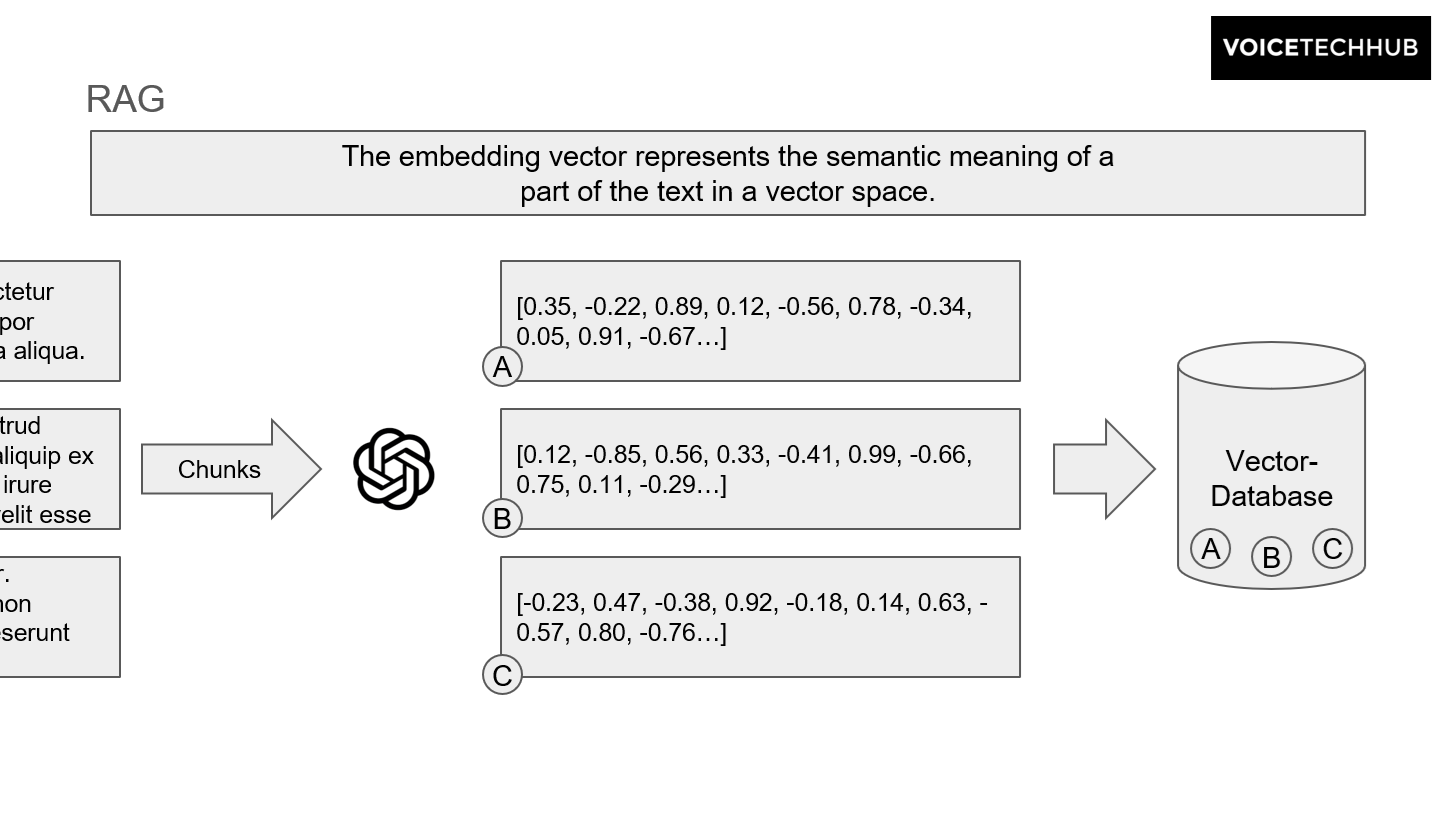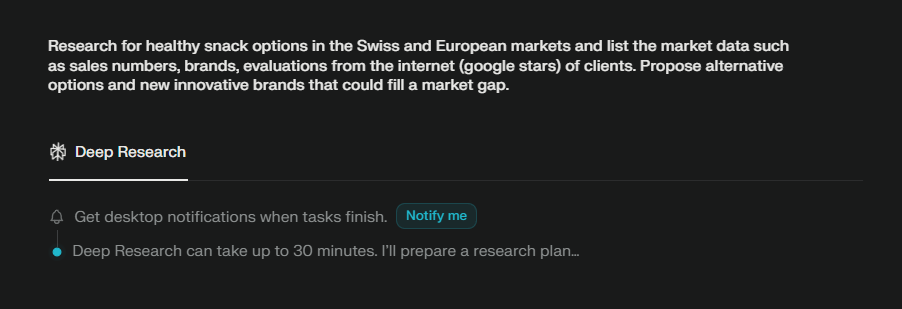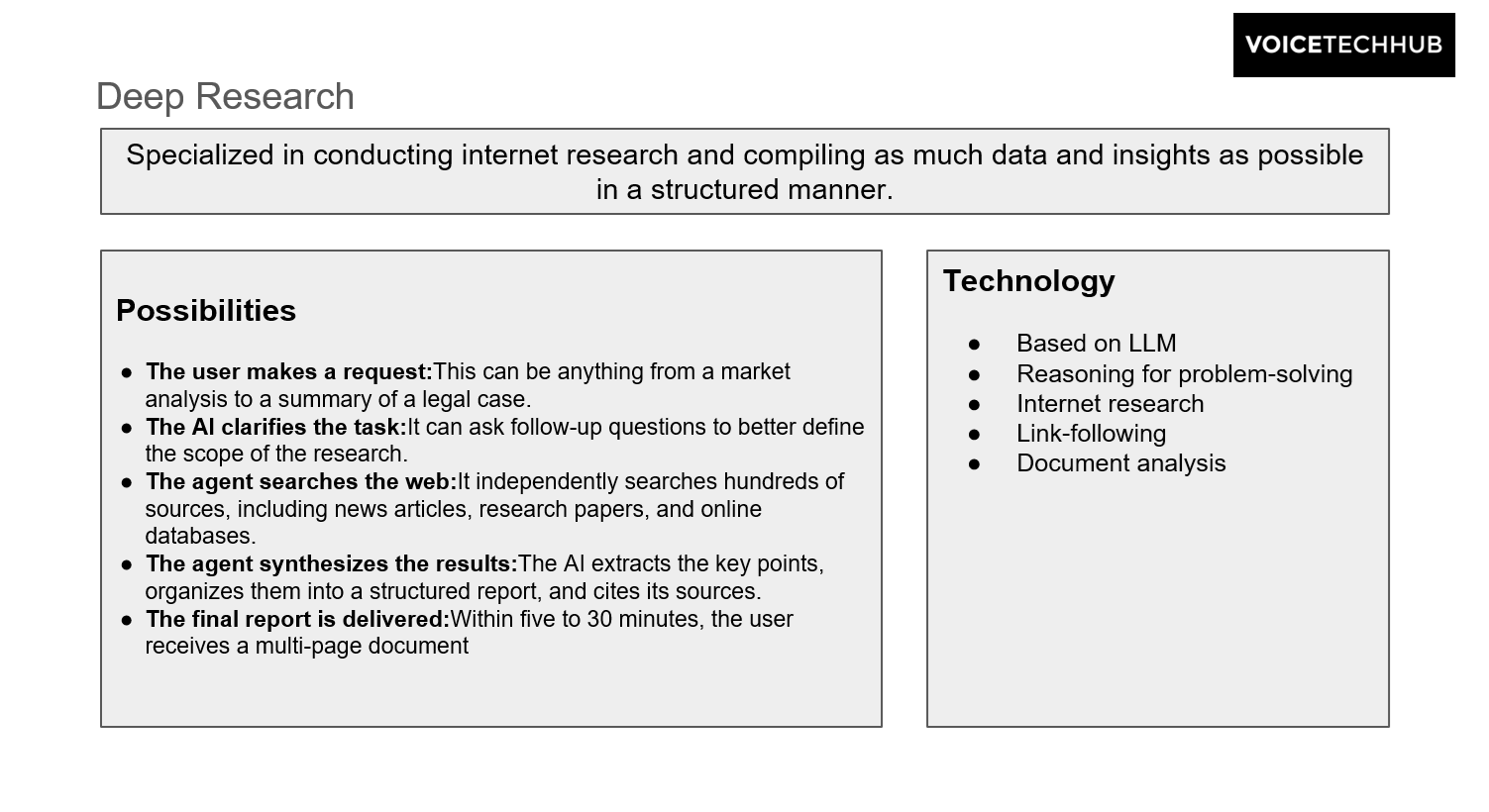Reasoning vs. Deep Research vs. RAG
What's RAG?
The goal is for the language model is not to draw on its own knowledge (from the model), but for information to be enriched in the prompt. This is usually your own data you provide to the model (PDFs, systems).


RAG explained with vector databases.
What is Reasoning?
Reasoning models are specialized in drawing logical conclusions, understanding arguments, and evaluating relationships.
Example: Deep Seek R1 or OpenAI Model o1 (e.g. for very complex logical tasks), o3-mini high (e.g. programming) and o3-mini (e.g. for smaller complex task).

How does Deep Research work?
Deep Research is specialized in conducting internet research and compiling as much data and insights as possible in a structured manner. It follows links and opens files on websites, extracts data. Keep in mind that it can take several minutes due to many steps it is executing.
Examples:
- Deep Research in OpenAI
- Deep Research in Perplexity based on Deep Seek Models
Ideal for:
- Extensive Research Tasks
- Competitive Analysis
- Strategic Analysis
- Analyst Work
Who should use Deep Research?
- Medical Researchers
- University Employees
- Marketing Researchers
- Market Researchers
- Investment Managers and Venture Capitalists
- Financial Institutions


Deep Research Explained
Conclusion:
Each method brings a unique set of capabilities to the table, and trying a few out can help you determine the one that aligns best with your tasks. Keep in mind that reasoning models are not always necessary and need many ressources - especially if you do not need to execute logical tasks such as programming. Instead for writing texts and simple summaries use GPT-4o (or alternative models without reasoning components) instead.
Do you want to create your secure Deep Research for your company?
Need support with your Generative AI Strategy and Implementation?
🚀 AI Strategy, business and tech support
🚀 ChatGPT, Generative AI & Conversational AI (Chatbot)
🚀 Support with AI product development
🚀 AI Tools and Automation















